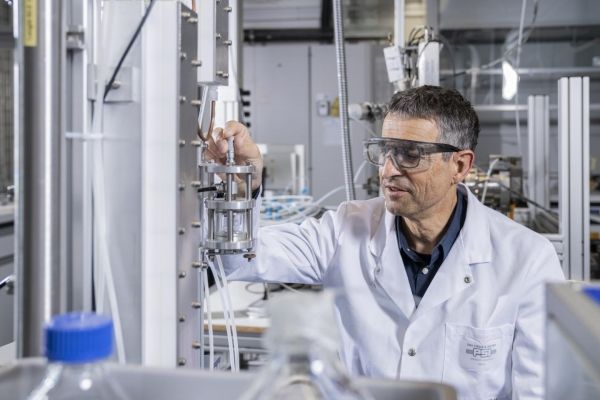Researchers at the Paul Scherrer Institute PSI have for the first time observed photochemical processes inside the smallest particles in the air. In doing so, they discovered that additional oxygen radicals that can be harmful to human health are formed in these aerosols under everyday conditions. They report on their results today in the journal Nature Communications.
It is well known that airborne particulate matter can pose a danger to human health. The particles, with a maximum diameter of ten micrometres, can penetrate deep into lung tissue and settle there. They contain reactive oxygen species (ROS), also called oxygen radicals, which can damage the cells of the lungs. The more particles there are floating in the air, the higher the risk. The particles get into the air from natural sources such as forests or volcanoes. But human activities, for example in factories and traffic, multiply the amount so that concentrations reach a critical level. The potential of particulate matter to bring oxygen radicals into the lungs, or to generate them there, has already been investigated for various sources. Now the PSI researchers have gained important new insights.
From previous research it is known that some ROS are formed in the human body when particulates dissolve in the surface fluid of the respiratory tract. Particulate matter usually contains chemical components, for instance metals such as copper and iron, as well as certain organic compounds. These exchange oxygen atoms with other molecules, and highly reactive compounds are created, such as hydrogen peroxide (H2O2), hydroxyl (HO), and hydroperoxyl (HO2), which cause so-called oxidative stress. For example, they attack the unsaturated fatty acids in the body, which then can no longer serve as building blocks for the cells. Physicians attribute pneumonia, asthma, and various other respiratory diseases to such processes. Even cancer could be triggered, since the ROS can also damage the genetic material DNA.
Read more at Paul Scherrer Institute
Image: Markus Ammann at one of the devices used to carry out the fine dust tests. (Credit: Paul Scherrer Institute/Markus Fischer)


